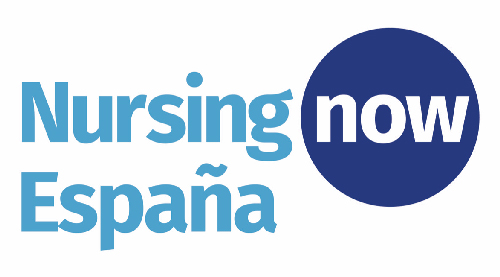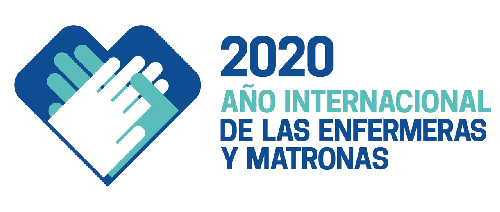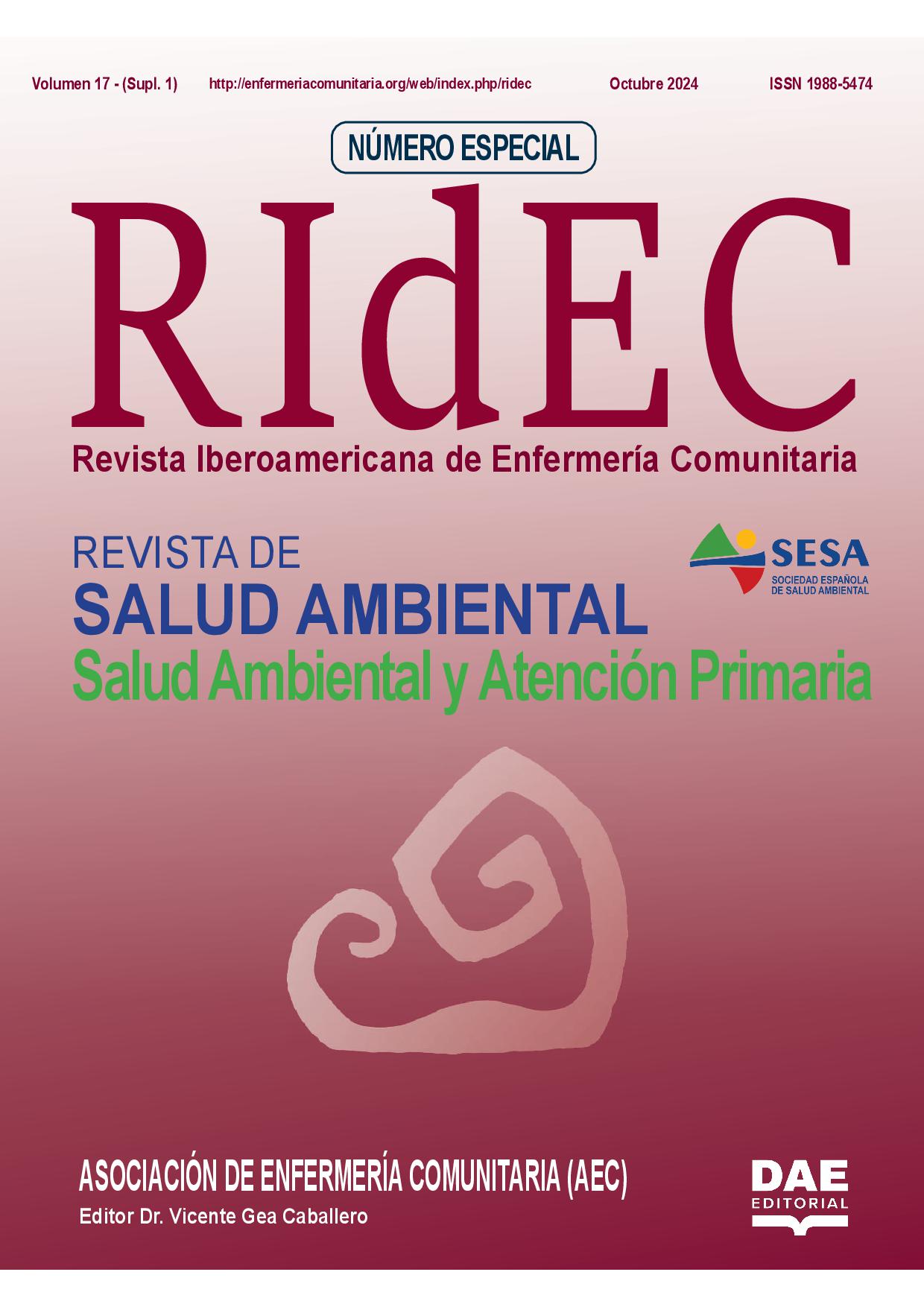Cómo citar este artículo:
Sanchis Sánchez E, Sánchez Lorente MM, Olmedo Salas A, García Molina P, Balaguer López E, Blasco Igual JM. Awareness of hand higiene in health science studens. Educational experience. RIdEC 2021; 14(1):44-9.
Fecha de recepción: 22 de octubre de 2020.
Aceptada su publicación: 17 de febrero de 2021.
Autores
1 Enrique Sanchis Sánchez
2 Mª Montserrat Sánchez Lorente
2 Ángela Olmedo Salas
3 Pablo García Molina
3 Evelin Balaguer López
1 José María Blasco Igual
- Department of Physiotherapy. University of Valencia. Spain
- Nursing School La Fe. University of Valencia. Spain.
- Department of Nursing, University of Valencia, Spain.
CONTACTO:
Email: Esta dirección de correo electrónico está siendo protegida contra los robots de spam. Necesita tener JavaScript habilitado para poder verlo.
Abstract
Purpose: the main objective of this work was to convey the importance of hand hygiene in preventing the transmission of infections in the health field. Likewise, the experience sought to verify if peer education was effective for the acquisition of skills and awareness of the need for hand hygiene by health science student.
Methods: the use of active methodologies in the teaching-learning process was the chosen option. Through an educational innovation project, the experience was implemented. Students of the Degree in Nursing who had acquired skills in hand hygiene participated in the experience with students of the Degree in Physiotherapy, using different participatory tools, as well as specific self-assessment questionnaires of knowledge and satisfaction.
Results: all the students increased the level of previous knowledge about hand hygiene and expressed great satisfaction with the experience and the methodology used.
Conclusions: these types of experiences are shown as valid options in the acquisition of knowledge and skills of hand hygiene.
KEYWORDS:
hand hygiene; educational innovation project; health science students; active methodologies.
Título:
Toma de conciencia de la higiene de manos en estudiantes de Ciencias de la Salud. Experiencia educativa.
Resumen:
Objetivo: este trabajo tuvo como objetivo principal trasmitir la importancia de la higiene de manos en la prevención de la transmisión de infecciones en el ámbito sanitario. Asimismo, la experiencia buscaba comprobar si la educación entre iguales era efectiva para la adquisición de competencias y la toma de conciencia de la necesidad de la higiene de manos por parte de los estudiantes de Ciencias de la Salud.
Método: el uso de metodologías activas en el proceso de enseñanza-aprendizaje fue la opción elegida. Mediante un proyecto de innovación educativa se implementó la experiencia. Alumnos de Grado en Enfermería que habían adquirido las competencias en la higiene de manos participaron en la experiencia con alumnos del Grado en Fisioterapia, utilizando diferentes herramientas participativas, así como cuestionarios específicos de autoevaluación de conocimientos y satisfacción.
Resultados: todos los alumnos aumentaron el nivel de conocimientos previos sobre la higiene de manos y manifestaron una gran satisfacción con la experiencia y la metodología utilizada.
Conclusiones: este tipo de experiencias se muestran como opciones válidas en la adquisición de conocimientos y habilidades de la higiene de manos..
PALABRAS CLAVE:
higiene de manos; proyecto de innovación educativa; estudiantes de Ciencias de la Salud; metodologías activas.
Introducción
Infection prevention and control is a scientific approach and practical solution designed to prevent harm caused by infection to patients and health workers. It is grounded in infectious diseases, epidemiology, social science and health system strengthening. IPC occupies a unique position in the field of patient safety and quality universal health coverage since it is relevant to health workers and patients at every single health-care encounter (1).
Data from health services indicate that 1 in 10 patients contract an infection while receiving medical care. This leads to prolonged hospital stays, long-term disability, increased antimicrobial resistance of microorganisms, massive additional costs to health systems, high costs to patients and their families, and unnecessary deaths. It is pertinent to incorporate the promotion of a culture of patient safety in Health Sciences students before starting the practical period in health institutions (2).
The hands are the main route of transmission of germs during it. Hand hygiene is recognized by the World Health Organization (WHO) as the most important measure to prevent the transmission of germs and healthcare-associated infections. Due to the importance of this procedure, it is crucial that the teaching-learning process in Health Sciences degrees guarantees an improvement in quality through patient safety. The prevention and control of infection, including hand hygiene, is a critical element to achieve Universal Health Coverage for three reasons; it’s an evidence-based practice, has demonstrated an impact on quality care and Patient Safety and reaches all levels of healthcare (3-5).
The educational model of the European Higher Education Area has created the need for a qualitative change in colleges’ education, in which the acquisition of knowledge gives a step in-depth into study and development of students’ competencies.
The change not only affects the structure and content, but also methodology. This should focus on the learning process and the acquisition of competencies through teaching-learning strategies that foster a collaborative environment, playing these factors a decisive role. In this context of change, digital technologies are current tools that may help to improve the inputs and outputs of the teaching-learning processes (6-8).
The persistent pervasiveness of teacher centered learning formats is not only to be found in medical education but in most healthcare educational programs (9). Among the main objectives of the Patient Safety Program of the World Health
Organization is: "To promote and develop the knowledge and culture of the patient safety among professionals and patients at any level of the Health care". Likewise, in Spain, the Ministry of Health, Social Services and Equality has launched another campaign and the conclusions of the EPINE 2017 study, after showing that nosocomial infections affected 7.74% of patients in Spain, suggest the implementation of programs of awareness raising through safety culture in health centers and hand hygiene campaigns. This campaigns implies the development of actions to improve training and access to current information on the safety of professionals, patients and citizen (10-13).
In this context, and considering current data from healthcare services suggesting that one every ten patients contracts an infection while receiving healthcare, it is important to incorporate the development of the patient safety culture to also prevent extra risks to students before starting their internships and career in healthcare facilities and institutions. Indeed, the hands are the main way of transmission of germs during healthcare, and hand hygiene is recognized by WHO as the cheapest, simplest and most effective measure to prevent infection associated with healthcare and cross-transmission of multi-resistant organisms. However, the adequate hand cleaning procedure is not thoroughly studied in most university studies in healthcare sciences, even when it is well established that patient safety strategies avoid prolonged hospital stays, long-term disabilities, increased resistance of microorganisms to antimicrobials, massive additional costs for health systems and families and unnecessary deaths are being some of the results of that contingency (12,13).
Given the above factors, this innovation activity sought to ensure that hand hygiene competence, which should be encompassed in all areas of health, was taught on collaborative learning basis. Thus, nursing students, who conventionally receive this education in their curricula, were in charge of transmitting such knowledge to other areas of healthcare sciences, specifically to physiotherapy, a profession in which professional-patient manual contact is the basis of a large part of the treatments. The goal was to achieve the acquisition of knowledge and skills in hand hygiene through shared learning and the correct use of new technologies in the classroom.
Methods
A shared teaching-learning program was put into practice in the academic course 2018-2019 with students of the third year of the Degree in Nursing (Hospital BLINDED). The activity was part of an innovation activity based on active teaching methodologies, in which learning was promoted through the conception, design, planning, development and evaluation of the project “Active learning of hand hygiene”. Then, eleven students volunteer to put into practice and share the acquired competencies about this methodology with students from a different healthcare area, Physiotherapy, in which hand hygiene protocols are not part of the curricula. This innovation activity was implemented within the framework of "Active learning methodologies" accepted in the Resolution at University of BLINDED of June 10, 2019, of the Vice-Chancellor's Office for
Formation Programs, for which the summon is called for the development of educational innovation projects for the academic year 2019-2020. Active and participatory teaching-learning process on hand hygiene was part of the syllabus of
"Introduction to Nursing Practice" in which techniques such as focus group, flipped class room, explanatory video recording and use of gamification were demonstrated by participants acting as teachers in front of eighty-two students of the second year of Degree in Physiotherapy at the University of Valencia.
Interventions
A two-hour session was held per group. The sessions were supervised by Nursing students, who explained through audiovisual means the importance and need for hand hygiene, and its procedure. Each session involved a theoretical part, a workshop, assessment of pre and post learnt material, individual self-assessment of the hand disinfection procedure and feedback. The theoretical part had the support of tools such as Power Points and audio-visual material, prepared in some cases by the group acted as teachers. Workshops included the use of a hydroalcoholic solution with fluorescein for hand disinfection, a hood and ultraviolet flashlights to check if it had been done correctly and students’ classroom engagements.
Assessment and data collection
Knowledge and skills about hand hygiene was assessed with a questionnaire that was specifically designed for this activity.
The Kahoot online system questionary was conducted for evaluation´s purposes.
There were 20 questions (true/false) adapted from the WHO document “Hand hygiene: why, how, when?” (June 2012) and the document “Top 10 questions about hand hygiene” of the Patient Safety Strategy - Hand Hygiene Program of the Ministry of Health, Consumption and Social Welfare. The questionnaire has been appended in the supplementary material.
Acquisition of skills and competencies was based on self-evaluation procedure of hand disinfection through the use of a lamp with ultraviolet light, and using fluorescein and ultraviolet light, since hands disinfection was based on a fluoresceinlabeled hydro-alcoholic solution base preparation. Once the procedure of disinfecting the hands with this solution was carried out, the hands were inspected with a "magic lamp", equipped with an ultraviolet light that allows the naked eye to detect possible areas that were not properly cleaned and disinfected. Finally, student satisfaction was assessed through the use of a questionnaire with fourteen questions divided in three parts: four questions for general evaluation of the activity, six for methodology and organization from the resources used, and four for evaluation of the teaching team (undergraduate students in Nursing).
Data analysis
Data were analyzed with the SPSS 22.0 software, licensed by the Universitat de BLINDED. Demographical characteristics of the sample were described as means, standard deviations, frequencies and percentages.
First, a descriptive analysis of the pre-post questionnaires of the level of knowledge (physiotherapy students) of the 2019- 2020 experience was carried out, with the frequency count. To determine the relationship between pre and post, a chisquare test was used, given the nature of the items in both questionnaires. The Fisher statistic has also been requested, since frequencies below 20% were found in the corresponding 2x2 tables and it was necessary to corroborate with the chi-square results.
Second, the level of knowledge was determined and compared based on the questionnaire responses and one-way analysis of variance looked for between-group differences (nursing students 2018-2019 vs. physiotherapy students 2019-2020). A descriptive analysis of the results was carried out, with the count of frequencies. A sensitivity analysis of the individual questions was proposed to determine the relationship between the pre and the post-test results, a chi-square contrast was used, given the nature of the items in both questionnaires. Then, a comparison analysis of the post-knowledge questionnaires of the Nursing students (academic year 2018-2019) and post-questionnaires of the Physiotherapy students (2019-2020 course) was conducted.
A descriptive synthesis was undertaken to assess satisfaction.
Results
Overall, 59 Nursing students undertook the activity in 2018-2019, of which 11 (90% women) volunteered to supervise the sessions carried out in the following year with 82 Physiotherapy students. The sample characteristics who participated is shown in Table 1.

The results obtained from the pre-post questionnaires show an increase in the numbers of correct responses (Table 2).
Once the chi-square contrast and the Fisher statics were applied, it was obtained that all the post answer are significant with p< 0.05, except for questions 4 in pre x post with= 0.122 (Table 3).
The results obtained from the questionnaires shown that students reached similar skills and competences in both groups (p> 0.05). A sensitivity analysis comparing the responses in the individual questions shown that between Nursing students (academic year 2018-2019) and physiotherapy students (2019-2020 course) there were significant differences between course in items 2, 4, 5, 6, 7 y 13 (p< 0.05).
The satisfaction of Physiotherapy students with the activity as per category was “strongly agree” in 63.30% to 87.5% of cases, and “agreement” between 11.30% to 27.5% (Table 4). The questions with the highest score were: Will I be able to apply the Knowledge acquired in my professional practice? (Q-2) with 87.5%. Regarding the methodology and organization of resources, satisfaction shows a high percentage in the responses of “strongly agree” and “agree”. As for the question: Has the logistics organization contributed to the development of the activity? (Q-10), 72.5% strongly agreed and 25% agreed. Regarding to the question: Have the contents developed during the training action been useful? 58.8% responded strongly agree and 37% agreed. About methodology: Have didactic methods been used adequately for the optimal development of the activity? 71.3% answered very strongly and 23.8% agreed.
Overall, the satisfaction with the teaching team has been very high, highlighting the intervention of the team of Nursing students (Q-11).
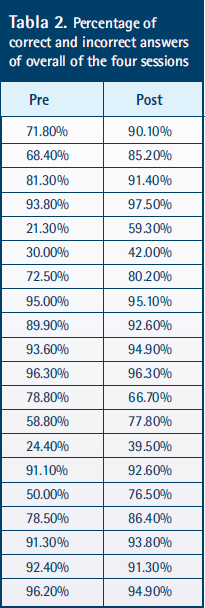
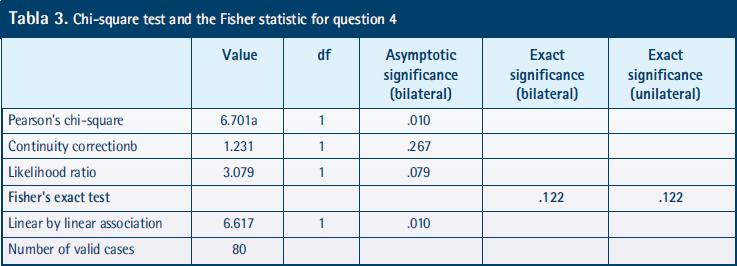
 .
.
Discussion
This work shown the effectiveness on the use of combined technologies with the theoretical-practical aspects of certain concepts such as hand hygiene, in a higher
Health Science Education. Awareness of correct hand hygiene in the prevention of infections in the healthcare system has been achieved. The concept is mandatory to reduce the incidence of nosocomial infections, likewise, learning the correct procedure to follow has been facilitated.
Active learning “peer to peer” a more effective means of instruction over a traditional, didactic approach (14-15). The improvement of nursing students’ hand hygiene skill in theʺ near-peer groupʺ is better than the ʺinstructor teaching groupʺ and it is suggested to use it as a method for teaching students practical skills (15).
Student Feedback on the Flipped Classroom Approach and the student (peer-topeer) are considered as positive (16-18).
In our training, several techniques have been used: focus group, the flipped classroom, guided learning, learning games, shared learning among peers, audiovisual media, power point presentations and practical simulation. Students appreciated the didactic methods used as extremely suitable. In general, they prefer the flipped format of class to a traditional lecture format, even if they are a bit hesitant at first (19,20).
The results suggest that this innovative approach, in which the instructors are the students, facilitated the learning process. Besides, more content has been definitely learnt. Physiotherapy students´ feedbacks were also satisfactory and considered of a great use in their future professional practices. Therefore, using active learning in the flipped approach can increase student learning as well as satisfaction over traditional, non-active learning approaches (21-22).
It should be emphasized the significant differences from a statistical point of view, in some of the items of the post questionnaires of the Nursing students (academic year 2018-2019) with much more positive and quantitative outcomes and the post questionnaires of the Physiotherapy students (2019-2020 course) due probably to the fact that in the first case, the material was part of the academic syllabus.
However, the level of acquired knowledge was similar.
The results of this experience show that the methodology used can be applied in community interventions for health promotion.
Conclusion
We recommend other lecturers to implement this type of experience and to interpret the results in order to share within the academic community.
Overall, this study supports that the implementation of active methodologies, such as shared learning experiences among peers, shown a positive skill in the teachinglearning process of hand hygiene procedure in the Health Sciences university studies context.
References
[1] World Health Organization (WHO). Infection prevention and control [internet] [cited 17 feb 2021]. Available from: https://www.who.int/infection-prevention/about/ipc/en/
[2] World Health Organization (WHO). Health care-associated infections [internet] [cited 17 feb 2021]. Available from: https://www.who.int/gpsc/country_work/gpsc_ccisc_fact_sheet_en.pdf?ua=1
[3] World Health Organization (WHO). Global Survey on Infection Prevention and Control and Hand Hygiene. [internet] [cited 17 feb 2021]. Available from: https://www.who.int/infection-prevention/campaigns/ipc-global-survey-2019/en/
[4] World Health Organization. WHO guidelines on hand hygiene in health care [internet]. Geneva: WHO; 2009. [cited 17 feb 2021]. Available from: https://apps.who.int/iris/bitstream/handle/10665/44102/9789241597906_eng.pdf
[5] World Health Organization (WHO). Implementation Toolkit. [internet] [cited 17 feb 2021]. Available from: http://www.who.int/gpsc/5may/tools/en/index.html
[6] Comisión Europea. El Espacio Europeo de Educación Superior en 2012. Informe sobre la implantación del Proceso de Bolonia [internet] 2012 [cited 17 feb 2021]. Available from: https://www.sel-gipes.com/uploads/1/2/3/3/12332890/2012_eurydice_-_the_european_higher_education_area_in_2012__sp.pdf
[7] De Miguel Díaz M, Alfaro Rocher I, Apodaca Urquijo P, Arias Blanco J, García Jiménez E, Lobato Fraile C. Metodologías de enseñanza y aprendizaje para el desarrollo de competencias: orientaciones para el profesorado universitario ante el Espacio Europeo de Educación Superior. Madrid: Alianza editorial; 2006.
[8] Ramos R. Modalidades de Enseñanza Centradas en el Desarrollo de Competencias Orientaciones para Promover el Cambio Metodológico en el Espacio Europeo de Educación Superior. [internet] 2005 [cited 17 feb 2021]. Available from: https://www.academia.edu/5817175/Modalidades_de_Enseñanza_Centradas_en_el_Desarrollo_de_Competencias_Orientaciones_para_Promover_el_Cambio_Metodológico_en_el_Espacio_Europeo_de_Educación_Superior
[9] Tolks D, Schäfer C, Raupach T, Kruse L, Sarikas A, Gerhardt-Szép S, et al. An introduction to the inverted/flipped classroom model in education and advanced training in medicine and in the healthcare professions. GMS Journal for Medical Education 2016; 33(3).
[10] Ministry of Health Social Services and Equality. Quality plan of the national health system [internet]. 2016. [cited 17 feb 2021]. Available from: https://www.seguridaddelpaciente.es/es/presentacion/
[11] Ministry of Health Consumption and Social Welfare. EPINE [internet]. [cited 17 feb 2021]. Available from: https://epine.es/
[12] World Health Organization (WHO). Patient safety. [internet]. [cited 17 feb 2021]. Available from: https://www.who.int/patientsafety/en/
[13] World Health Organization (WHO). Save lives: Clean Your Hands. [internet]. [cited 17 feb 2021]. Available from: https://www.who.int/gpsc/5may/background/en/
[14] Andrews TM, Leonard MJ, Colgrove CA, Kalinowski ST. Active learning not associated with student learning in a random sample of college biology courses. CBE-Life Sciences Education 2011; 10(4):394-405.
[15] Shohani M, Moradi S, Khorshidi A, Jalilian M. Comparison of the effect of "near-peerʺ teaching and trainer on hand hygiene in first year nursing students of Ilam University of Medical. Sciences. J Adv Pharm Edu Res 2020; 10(S1):83-7.
[16] Tartari E. Train-the-Trainers in hand hygiene: a standardized approach to guide education in infection prevention and control. Antimicrobial Resistance and Infection Control (2019) 8:206. Doi: https://doi.org/10.1186/s13756-019-0666-4
[17] McCallum S, Schultz J, Sellke K, Spartz J. An examination of the flipped classroom approach on college student academic involvement. International Journal of Teaching and Learning in Higher Education 2015; 27(1):42-55.
[18] Jensen JL, Kummer TA, Godoy, Patricia D d M. Improvements from a flipped classroom may simply be the fruits of active learning. CBE-Life Sciences Education 2015; 14(1):ar5.
[19] Felton A, Holliday L, Ritchie D, Langmack G. Simulation: A shared learning experience for child and mental health pre-registration nursing students. Nurse Education in Practice 2013; 13(6):536-40.
[20] Demirci, C. The Effect of Active Learning Approach on Attitudes of 7th Grade Students. International Journal of Instruction 2017; 10(4):129-144. Doi: https://doi.org/10.12973/iji.2017.1048a
[21] Martos-Cabrera MB, Mota Romero E, Martos-García M, Gómez-Urquiza JM, Suleiman-Martos N, Albedín-García L, et al. Hand Hygiene Teaching Strategies among Nursing Staff: A Systematic Review. Int J Environ Res Public Health. 2019 Sep; 16(17):3039. Doi: https://doi.org/10.3390/ijerph16173039
[22] Ausín V, Abella V, Delgado V, Hortigüela D. Aprendizaje basado en proyectos a través de las TIC: una experiencia de innovación docente desde las aulas universitarias. Formación universitaria 2016; 9(3):31-8.






